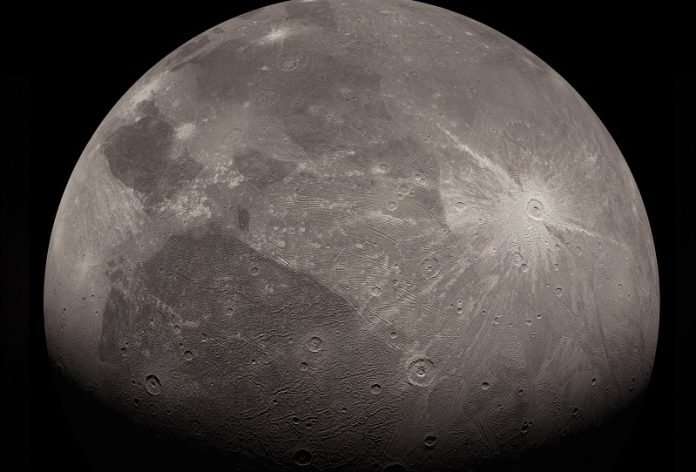
Jupiter, the largest planet in our solar system, has a big moon named Ganymede. NASA’s Juno spacecraft has found some exciting things on this moon’s surface.
Juno discovered mineral salts and organic compounds, suggesting that Ganymede might have had a salty past.
Why is this a big deal? Because these findings can help scientists learn more about where Ganymede came from and what’s hidden beneath its surface.
The information was shared in the journal Nature Astronomy.
Ganymede is not just any moon; it’s the biggest one that orbits around Jupiter. In fact, it’s even larger than the planet Mercury!
Scientists have been curious about Ganymede for a long time. This is because it’s believed that underneath its icy top layer, Ganymede has a giant ocean of water.
Earlier, other tools, like NASA’s Galileo spacecraft and the Hubble Space Telescope, gave clues that there might be salts and organic materials on Ganymede. But those tools couldn’t give a clear answer.
On June 7, 2021, Juno had a close look at Ganymede. It flew just 650 miles (1,046 kilometers) above the moon.
During this flyby, Juno used a special tool called the Jovian InfraRed Auroral Mapper (JIRAM) spectrometer to take infrared pictures and study the chemicals on Ganymede’s surface. This infrared light helps scientists see things we can’t see with our eyes alone.
JIRAM was made by the Italian Space Agency. Its main job is to study the light that comes from deep within Jupiter.
But it has also been helpful in understanding some of Jupiter’s moons, like Io, Europa, Ganymede, and Callisto. These moons are called the Galilean moons because they were first discovered by the famous scientist, Galileo.
Thanks to JIRAM, Juno’s pictures of Ganymede were super detailed. Scientists could then see and study unique features of materials that aren’t just water-ice.
They found things like hydrated sodium chloride (that’s a fancy name for a kind of salt), ammonium chloride, sodium bicarbonate (something like baking soda), and possibly some other organic materials.
Federico Tosi, one of the Juno scientists from Italy, explained the findings. He said that the presence of certain salts suggests that Ganymede might have had cold materials that turned into ammonia when it was forming.
And other salts found could be left from ice rich in carbon dioxide.
Now, Jupiter has a strong magnetic field that sends out harmful particles. These particles can damage salts and organic materials.
But scientists found out that some parts of Ganymede are protected from these harmful particles because of its magnetic field.
Juno found that the places on Ganymede which have the most salts and organics are in these protected areas. This discovery makes Scott Bolton, Juno’s lead scientist, think that they might be seeing signs of a salty ocean that once reached Ganymede’s surface.
But Ganymede isn’t the only moon Juno is studying. It also had a close look at another moon, Europa, in 2021 and 2022.
Europa is special because it’s believed to have an ocean hidden beneath its icy surface, just like Ganymede. Juno will next visit Io, a moon known for its many volcanoes, at the end of December.
In short, Juno’s latest findings on Ganymede are like puzzle pieces. They give scientists clues about the moon’s past, its hidden ocean, and what’s on its surface. Every discovery helps us understand the universe a little bit better.
Follow us on Twitter for more articles about this topic.
Source: NASA.



